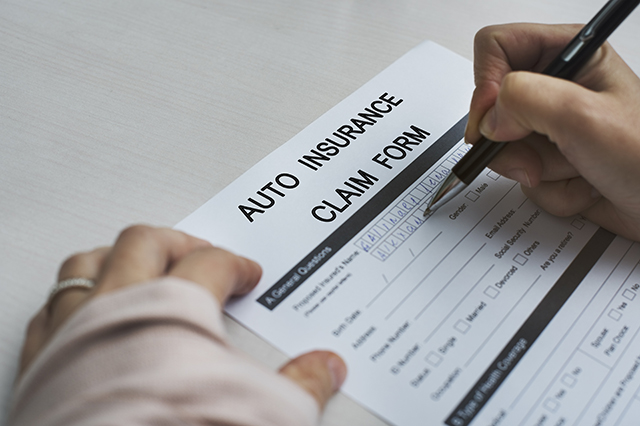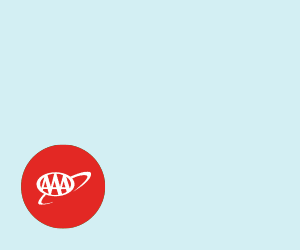Most drivers know they need car insurance to legally get behind the wheel, but a smaller number of drivers probably understand exactly what their car insurance policy protects.
Your insurance agent can help you to understand every part of your car insurance policy and make sure you’re not overpaying for coverage. Schedule an appointment with a AAA Insurance agent to learn more about your options. In the meantime, here’s a breakdown of some typical car insurance policy terms.
Common Car Insurance Policy Terms
The Basics
Every car insurance policy includes limits and deductibles.
Limits are the extent to which a policy protects a driver. Limits are often expressed in the following manner: A/B/C. “A” is the limit of what an insurance company will pay for bodily injury to a single person if a driver is at fault in an accident. “B” equals the total amount an insurance company will pay, per accident, for bodily injury if a driver is at fault. “C” is the total amount an insurance company will pay for property damage, such as damage to another motorist’s vehicle, if a driver is at fault. Some drivers will purchase umbrella coverage to safeguard themselves against claims that exceed basic auto insurance limits.
Deductibles are amounts drivers must pay out of pocket before their insurance companies step in. Accepting a policy with a higher deductible can often lower premiums as it decreases what an insurance company may have to pay following an accident.
The term is the period of time your car insurance policy is in effect.
A claim is a request for an insurance company to issue payment per the terms of your car insurance policy.
For more help understanding the lingo in your policy, see our auto insurance terms glossary.
Types of Coverage
A variety of protection falls under the umbrella of auto insurance.
Liability protection is the foundation of an auto insurance policy. It protects drivers against damage they inflict upon other people or their property. Nearly every state mandates drivers to have a minimum level of liability protection.
Uninsured or underinsured motorist coverage is designed to protect you from drivers who don’t have insurance or damage you or your property beyond the limits of their insurance. This is optional coverage in some states and mandatory in others.
Personal injury protection is a requirement in some states. It covers medical bills and may cover other costs for drivers and their passengers after an accident regardless of whether they were at fault.
Collision coverage protects your vehicle should it strike another object like a wall, tree or vehicle. It’s optional under state law but is often a requirement for anyone financing a vehicle purchase. Lenders require coverage as a way of protecting their investment. If a borrower defaults on an auto loan, the lender needs the vehicle to recoup its investment and a vehicle in bad shape isn’t worth as much. Some drivers who carry collision coverage consider dropping it when the cost of the protection exceeds the value of their vehicles.
Comprehensive coverage, optional under state law but often a requirement for drivers who’ve financed vehicle purchases, covers just about any other damage to vehicles such as fire, hail, vandalism, flood and theft.
If your car is being repaired, optional rental coverage will cover the cost of a rental vehicle.

Premiums
Premiums are what drivers pay for a car insurance policy. A variety of factors affect premiums, including the following.
Your car: The more expensive your car, generally the more expensive your repairs and insurance rates.
Your driving habits: The more you drive, the higher your chance of being in a crash, and greater risk typically means higher premiums.
Where you live: Those who live in urban areas usually have higher premiums than those in rural areas because the risk of accidents, theft and vandalism grows with population density.
Your driving record: Someone who has been in multiple accidents or has multiple moving violations is a statistically greater risk than someone with a clean driving record. Premiums follow accordingly.
Your coverage: Accepting a higher deductible can lower your premium because it decreases what your insurance company could be forced to pay. Having higher limits or optional coverage, like collision, on the other hand, can increase what an insurance company may have to pay, which can mean higher premiums.
Credit rating: California, Hawaii and Massachusetts are the only states where insurance companies cannot use drivers’ credit ratings to influence auto insurance premiums.
Discounts: Have you bundled your auto insurance and homeowners coverage? Did your teen driver complete driver education, or does he or she get good grades in school? Is your car equipped with anti-theft devices? Answering yes to any of these questions can sometimes help lower premiums.
AAA insurance experts are available to make sure you understand your car insurance policy. Get connected with one of our helpful insurance agents.
Have more questions about your car insurance policy? Let us know in the comments below.
















